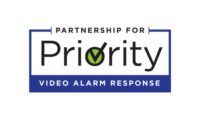PPVAR Flies Solo


The Partnership for Priority Video Alarm Response group held its official inaugural meeting during the Electronic Security Expo held this year in Nashville. At that meeting, ESX attendees including many influential members of the industry learned about the organization. PPVAR, explained founder Keith Jentoft, president of Videofied along with board members Steve Walker, vice president at Stanley Convergent Security Solutions, and Don Young, chief information officer at Protection 1, seeks to establish and build relationships with law enforcement and insurance companies through the promotion of priority response policies for video alarms. While some have lumped this effort into the false alarm reduction category, its members are looking for a different result: more arrests.
During that meeting, a primary point of discussion was whether PPVAR would continue to operate as an independent organization or whether it would be absorbed by an established industry organization like CSAA or ESA, in order to ensure that the message sent to law enforcement and insurers was cohesive and representative of the whole industry.
In an exclusive interview with SDM, Young commented, “There was a strong appetite to make PPVAR fit within an association. And if there was going to be a fit at all, CSAA would be it.” In the following months, Young took it upon himself to attend the International Association of Chiefs of Police conference held in September to hear their perspective first-hand and be able to educate his fellow CSAA board members. “Some comments challenged whether PPVAR would make a difference to law enforcement. I decided to get on the plane, fly to San Diego and attend the IACP meeting to find out for myself. It was a great choice to go there because I came back with all of my assumptions validated. There is no doubt in my mind about the impact the group will have.”
Expectation then turned to CSAA’s annual meeting held in Hawaii in October of this year, when CSAA would formally announce whether PPVAR could become part of the association. One of the big points of contention in the weeks leading up to that meeting was whether the CSAA was ready to become a proponent of priority response for video verified alarms and what that would mean for people in the industry who did not offer this kind of service.
During the board of directors meeting in Hawaii, the Executive Committee announced that PPVAR would not be part of CSAA. The issue was not formall debated or voted on by board members, as some expected it would.
Young continued, “We were asked by the board of CSAA to hold off on making any decisions to operate independently of CSAA until it was time to discuss and vote on the issue in Hawaii. Although I understand the Executive Committee’s prerogative to make this decision I was surprised to learn that there would be no discussion of it with the members.”
The terminology surrounding this issue seems one of the primary issues under discussion, with PPVAR proposing “priority” video response and CSAA promoting the term, “enhanced” video verification within its own newly created video verification committee. “The word priority is a red flag to many people, others think it represents future opportunity,” said Stephen Doyle, executive vice president and chief executive officer at CSAA.
Doyle commented, “CSAA, ESA and SIA have been unanimous in not wanting to see another organization out there. There is plenty of room within CSAA — as a matter of fact, we’ve created a video committee in two parts: one part is dealing with enhanced video verification… and the other part of the committee deals with standards and future technologies involving video.”
Some 15 CSAA board members remained after the meeting to debate the future of the group and its place in the industry, Young said. “In the end, those who wanted to join were disappointed that CSAA wasn’t sponsoring it.”
One key unresolved issue was made clear at the CSAA annual meeting and emphasized by both Young and Doyle: having two different messages going out to authorities having jurisdiction (AHJs) is not a positive for the security industry. During a luncheon at the CSAA annual meeting, guest Bart Johnson, executive director of the IACP pointedly asked who he should be communicating with on alarm industry issues such as false alarm reduction and alarm verification. Bob Bean, current president of CSAA responded that, “CSAA is the only entity that IACP should communicate with regarding those issues.”
Young noted, “This response completely confused me, given the decision by the Executive Committee 24 hours earlier to have PPVAR operate independently of CSAA.” PPVAR members strongly believe in the relationships they have already formed with law enforcement and they are already working with the IACP providing information for the new IACP white paper and alarm policy recommendations, so they seemed to have reached an impasse with CSAA.
“The industry is very split on this,” Doyle said. “Some people don’t understand it, some see it different ways, some think it’s the future. And there’s no way I know — I don’t have a crystal ball. What I do know is that industry associations including SIAC don’t feel that this is the time to have another industry organization out there speaking to AHJs for the industry… CSAA, ESA, and SIA as well as manufacturers through the CSAA Associate Members Liaison Committee and SIAC, which is the industry entity supported by all to work on the false alarm issue with the AHJ's specifically, do speak to AHJs with one voice, which is what they’re requested of us.”
Doyle emphasized, “There is plenty of room for anyone who wants to be involved in enhanced video verification in any and all of its forms to participate in the committee or either one of the subcommittees to work on video standards or new video technologies or the rest of that.”
Young noted that he still believes CSAA, which communicates with law enforcement through the Security Industry Alarm Coalition (SIAC), and PPVAR’s messages are far from incompatible. The two messages can coexist, Young said, and it isn’t necessary for two different groups to vie for law enforcement’s attention.
Jentoft pointed out to SDM that with some of the largest security companies on its board of directors, PPVAR is in a good position to speak with law enforcement and the insurance industry. In addition, some of the largest third party monitoring stations have already joined PPVAR including Rapid Response, CMS, COPS, Emergency 24, Affiliated, Acadian, NMC, and MACE. Furthermore, he echoed Young’s observation that law enforcement and insurers are behind the priority response initiative. For law enforcement, being able to confirm a crime in progress to speed up dispatch means they can be more effective at making arrests. Young believes it also may mean the difference between continuing to dispatch to non-priority alarms, albeit on a different time-frame as they do to verified alarms, and opting for a non-response policy to unverified alarms as the cities of Detroit, Mich. and San Jose, Calif. have done.
As it now stands, PPVAR will continue its work to develop relationships with both law enforcement and insurers. Its goal is now to raise awareness for security system end users that while security systems are beneficial, video verification is a significant enhancement that law enforcement pays attention to, and will respond to faster. Young emphasized that with a message focused on arrests, PPVAR can get law enforcement to give some positive attention to the security industry. “This is not a method for manufacturers to sell products,” Young said. “It’s about helping law enforcement solve a problem that they claim the industry is failing miserably at solving.”
Looking for a reprint of this article?
From high-res PDFs to custom plaques, order your copy today!





